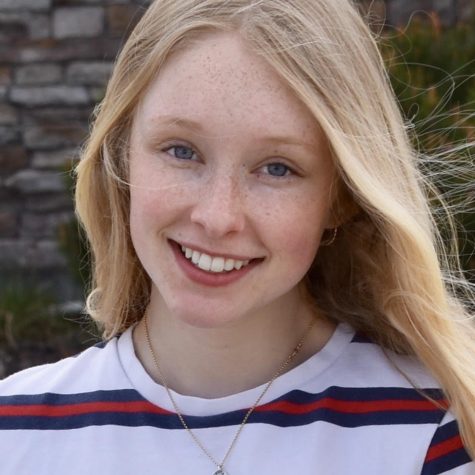Why Does Society Have a Problem With Creatives?
While taking the SAT, I came across an article that attempted to dissuade parents from steering their children away from artistic passions and careers. The article explained the negative stereotypes surrounding artists—that they can’t make any money or struggle to find work. What intrigued me most was the article’s acknowledgment and explanation of why there is a negative stigma surrounding the pursuit of artistic careers and why these myths need to be debunked.
It isn’t uncommon for parents to discourage their children from pursuing the arts or even practicing artistic hobbies. I’ve seen it before; if someone asks you what you want to be when you grow up, and you answer a doctor or a lawyer, most will commend you on your ambitious and rewarding career choice. If you say you’re an aspiring actor or painter, on the other hand, your choice is commonly deemed “risky” or “unattainable,” and many then receive a suggestion to pursue art on the side while going after a more financially stable field of study.
The topic of financial security is often brought up when discussing a career in the arts. The common view is that by becoming an artist, individuals sacrifice a sustainable income to follow their creative passions. While many artists, designers, or visual performers may not receive as high of a salary as a doctor per se, most are by no means starving. Their quality of life has been proven to soar above many typical professions.
In a survey consisting of over 100,000 graduated art students, 90 percent of them reported to be satisfied with their college experience and three quarters would attend the same institution again.
There are many reasons for this high satisfaction rate, but a large portion can be attributed to the abundant number of artists who find careers in their desired profession. 74 percent of those studied to be designers and artists found a job relating their studies in some capacity, while biology, accounting and mechanical engineers fall below 60 percent. So as it turns out, those in more creative careers are routinely able to secure a spot in the job market that pertains to their studies and long-lived passions. On the other hand, those that claim more traditional degrees find that they may never end up pursuing jobs using the same skills that they spent thousands of dollars and up to 12 years of higher education to acquire.
It also happens that nearly 75 percent of professional artists are self-employed. They make their own hours, earn off their personal profits, and are content with their work life’s flexibility. Many parents worry about this being a trait of instability; however, an artist’s happiness proves to be much more consistent than in any other profession.
If you think about it, an artist’s self-employment sounds much like what many consider to be entrepreneurship—a much less stigmatized career but entails the same amount of risk. But in fact, 1,500 CEOs worldwide rank creativity as the number one leadership quality that contributes to their success. Business and art go hand in hand—one should not be treated lesser than another.
Even with an artist’s high content in their profession, many denying parents believe that most artists don’t achieve the same level of success as people in typical business or entrepreneurial fields. People applaud common careers because they can see one’s success in the way that it aligns with their own desires—a desire for wealth. If you don’t understand art, you may not see how someone’s creative endeavors bring them the same sense of accomplishment that a pile of money may bring you. Our society has a toxic tendency to measure success in a materialistic fashion, prioritizing financial gain and societal approval over much else. It’s easy to equate less money with less success or less happiness, but that’s a very narrow-minded way of measuring an individual or group’s achievement.
After a certain point—where you can live comfortably and pay your bills—money doesn’t make someone happier. Artists can be happy; artists can be successful. Sure some artists will fulfill the stereotype of ending up poor and washed-up, but that’s a small minority. At the end of the day, being an artist is no different than being a lawyer or a doctor—it’s a career choice. Inevitably, just like in any profession, there will be those struggling to find their place in the field they’ve chosen.
Parents and those that frown upon artistic careers have fallen victim to cognitive bolstering: a tendency to look for proof or examples that confirm our prejudices and reject the alternative. Parents picture their children living in poverty and going mad and like Van Gogh and use this frightening image to dissuade their children from choosing this same path. But this isn’t the reality for most artists. Creative thinkers hold immense potential globally; their job market is continually expanding and these thinkers have a growing and vital place in the world. They give new perspectives to ordinary topics and defy the conventional views of what achievement stands for. So, parents: don’t stop your children from pursuing art. And to all the young artists out there: follow your dreams.

Cole Drozdek is a senior at Boulder High School. He is an avid climber and can often be found at The Spot Gym, where he has been on the team for the past decade. This past summer, Cole has found that his latest passion is bagging peaks with his buddies, although he is not a fan of waking up at 2 am. When he’s not climbing or hiking, Cole can be found perusing thrift stores or watching films with his friends. Cole’s passion for podcasts and movies led him to become a member of The Owl staff, and he hopes to further this passion for writing reviews and starting his very own podcast. Perhaps his first podcast episode will be dedicated to why green grapes are inherently better than purple grapes.

Ruby, a senior at Boulder High, is a first-year member of the Owl and hopes to explore the world of journalism through the eyes of a writer. While she isn't new to this style of writing, she has taken many years off from it and is excited to dive back in. Over the last year, The Owl caught her attention as she continued to read the funny, informative, or controversial articles her classmates had produced the year before. She is thrilled to take on stories in multiple categories of the newspaper and find her strengths in each. While she enjoys writing, you can also find Ruby biking over a mountain, kicking a ball around a field, bingeing a new TV series, or torturing her beloved siblings (they...

